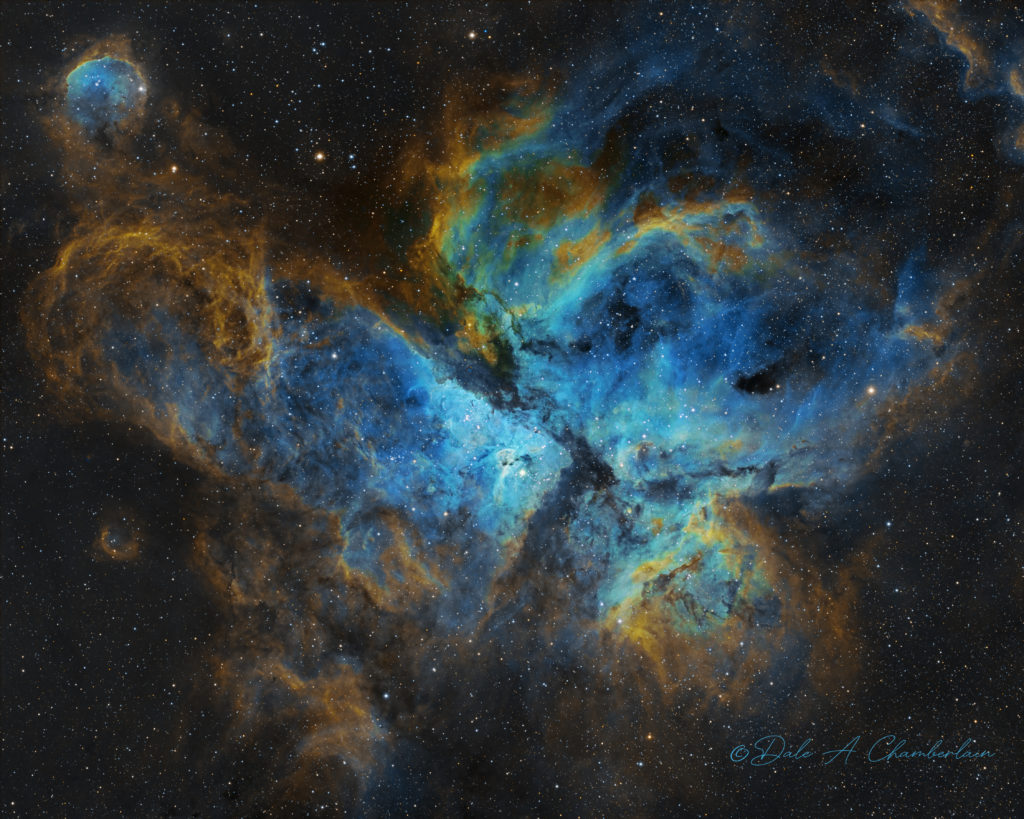
Object: The Eta Carinae Nebula (cataloged as NGC 3372; also known as the Great Carina Nebula) is a large, complex area of bright and dark nebulosity in the constellation Carina, located in the Carina–Sagittarius Arm of the Milky Way galaxy. The nebula is approximately 8,500 light-years from Earth.
The nebula is one of the largest diffuse nebulae in our skies. Although it is four times as large as and even brighter than the famous Orion Nebula, the Carina Nebula is much less well known due to its location in the southern sky. It was discovered by Nicolas-Louis de Lacaille in 1752 from the Cape of Good Hope.
The Carina Nebula was selected as one of five cosmic objects observed by the James Webb Space Telescope, as part of the release of its first official science images. A detailed image was made of a never before seen view of an early star-forming region of NGC 3324 known as the “Cosmic Cliffs.
Taken: April 11, 2021 at El Sauce Observatory, Río Hurtado, Coquimbo Region, Chile
Telescope: Officina Stellare RH200 600mm aperture f/3.0
Mount: Astro-Physics 1200GTO Equatorial Head Specification
Camera: FLI ML 16200 cooled to -20
Filters used: 50mm Astrodon Ha (3nm), SII (3nm), OIII (3nm)
Exposures: 5×600 seconds Ha, 5×600 seconds O-III, 3×600 seconds S-II for a total exposure time of 2.17 hours; calibrated with 10 dark frames, 10 flat frames and 10 bias frames.
Processed with PixInsight, Photoshop CC 2022
Image Processed By Dale A. Chamberlain; Original raw data and calibrations files from Telescope Live